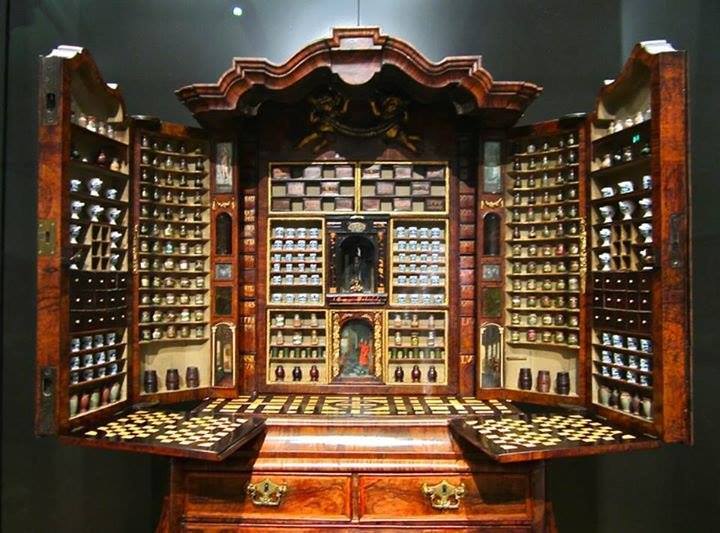“It is universally recognized that the first seeds of the Pharmaceutical Art began to germinate on the soil of the Orient, in these lands fertile in plants with sweet scents and fragrant resins” PHILIPPE “Histoire des Apothicaires” 1853
We had to wait for new ideas from the East to witness an upheaval in interior notions in the 11th century.
Arabian doctors influenced Pharmacy, botanical knowledge developed and aromatic substances from the East arrived in the West. Amber and musk in particular: the smoke of amber has long been used to prevent epileptic crisis.
At the same time, the use of the still allowed the preparation of essences of rosemary, cedar, bitter almonds...
Jean de Milan in 1066, brought together under the title of “Aphorisines” all the precepts of the School. Certain aromatic plants had, in his eyes, incredible properties. This is the case of fragrant sage which received the name of Orvale, because it was worth gold.
This meeting between East and West was to allow the pharmacy to free itself from medical tutelage, by gradually abandoning empirical practices, to form a particularly active and important corporation. However, we will have to wait several centuries before the art of healing also becomes a science.
It is important here to mention the role of Perfume in Medicine.
The use of fumigations for preventive or curative purposes.
MAUGUET, in his “Treatise on the Plague”, describes the carnival costume that those who approached the plague victims had to wear:
“It is made in Moroccan Leather from the Levant, the mask and eyes of crystal and a long nose filled with perfumes. The beak-shaped nose has only two holes, one on each side of the place of the natural nose openings, but it can be enough for breathing, and it is to carry with the air we breathe the impression of the drugs contained further in the beak”
As for Michel de NOSTRE-DAME, famous doctor-perfumer of the Renaissance (better known under the name of Nostradamus) who invented a scented powder “of perfect beauty and excellence” during the epidemic of the plague of Aix, of 1546.
“Take sawdust of the greenest cypress, one ounce;
Of Florence iris, six ounces;
Of cloves, three drams;
Of calamus, three drams;
Of aloe wood, six drams;
Take three or four hundred ingrown red roses, all fresh picked before the dew,
Pound the whole thing in a mortar;
Make small pills and dry in the shade;
Add musk and amber according to your will and power”
I will not add the whole listing of remedies used here, but most of them used fragrances and olfaction.
In 1626 Jean PARÉ, apothecary of the Duchess of Lorraine, provided her with iris powder, rose oil, lavender soap...
PART 2
Next: Perfumes considered as secret remedies in France from the end of the 17th century to the Germinal Law





 RSS Feed
RSS Feed